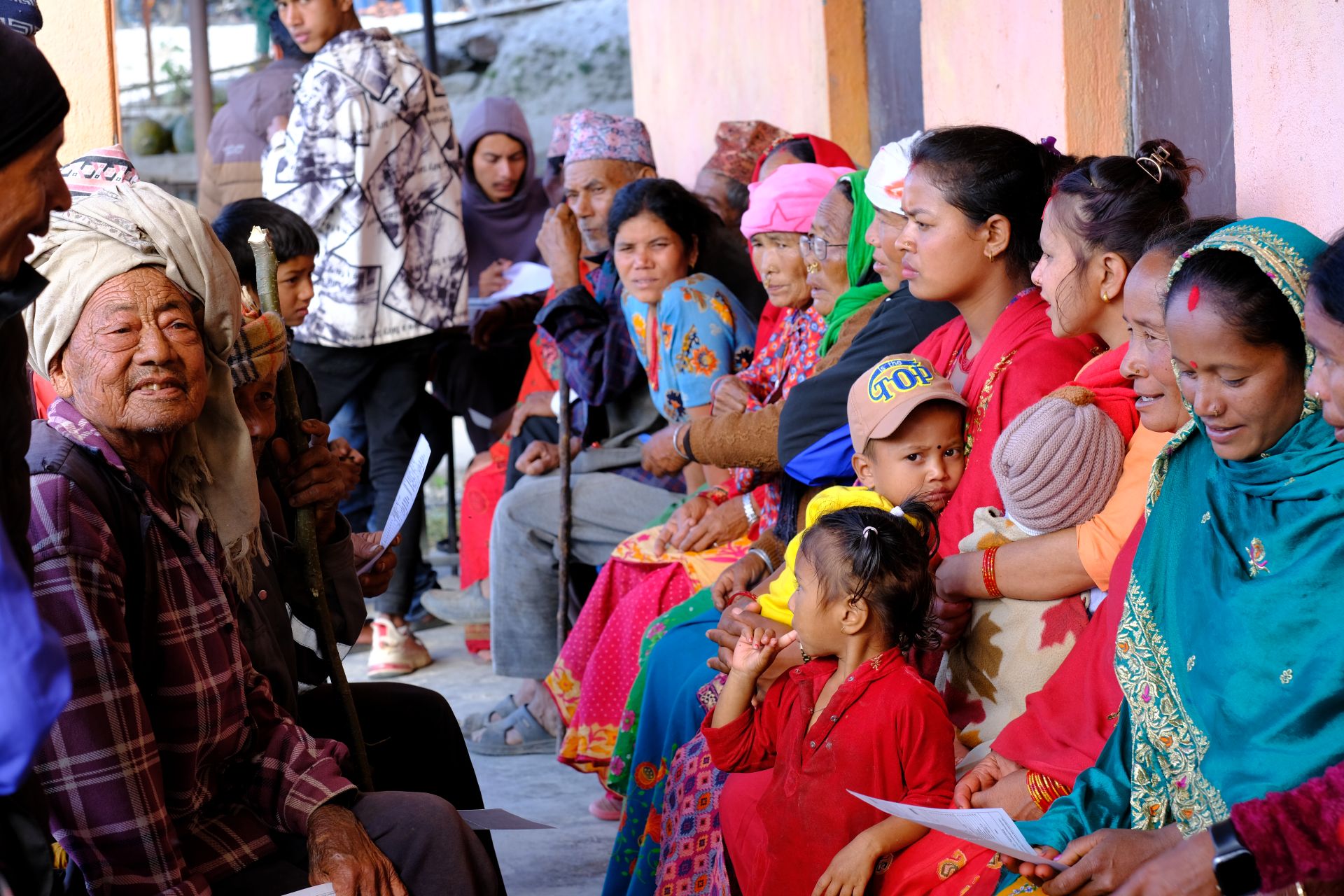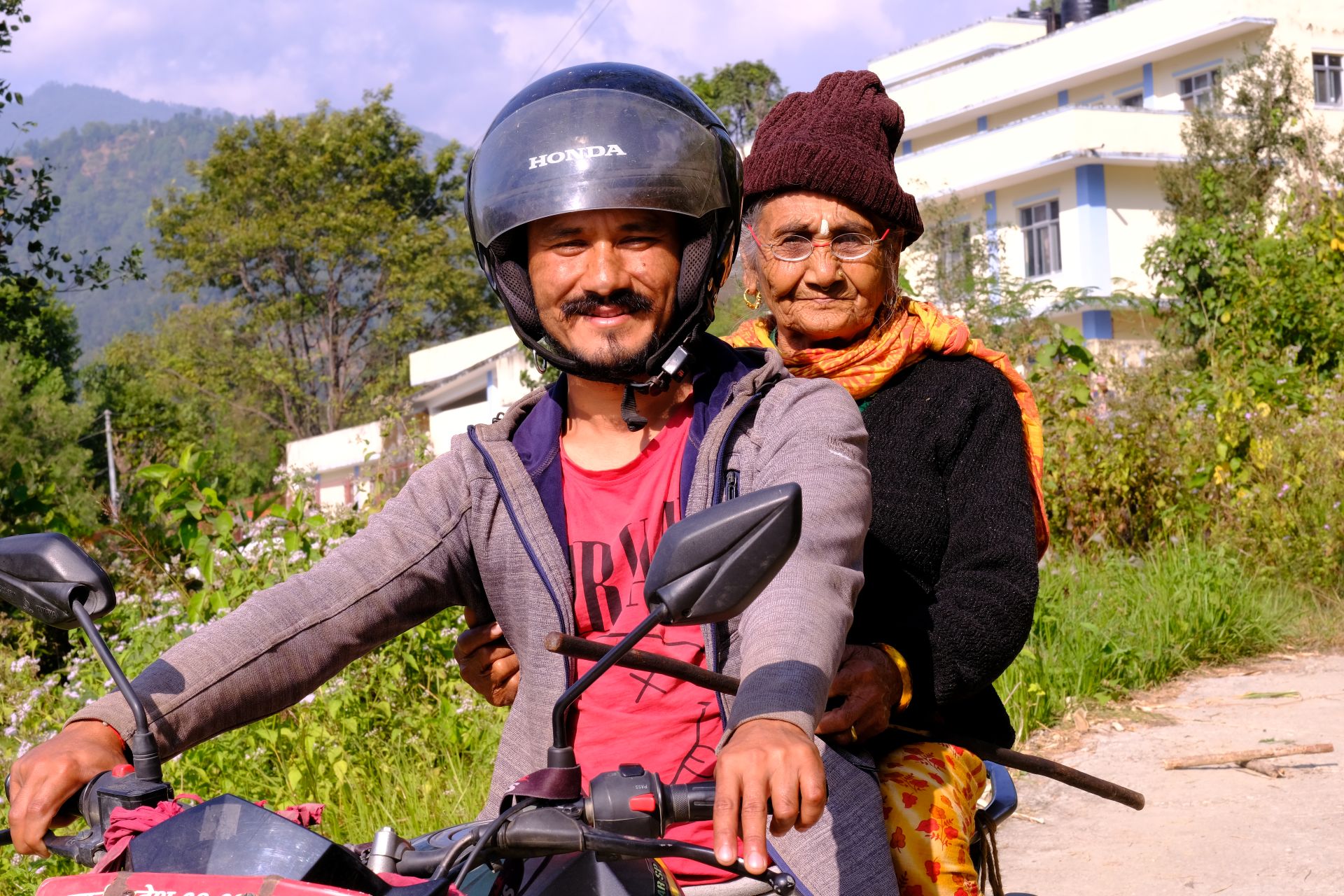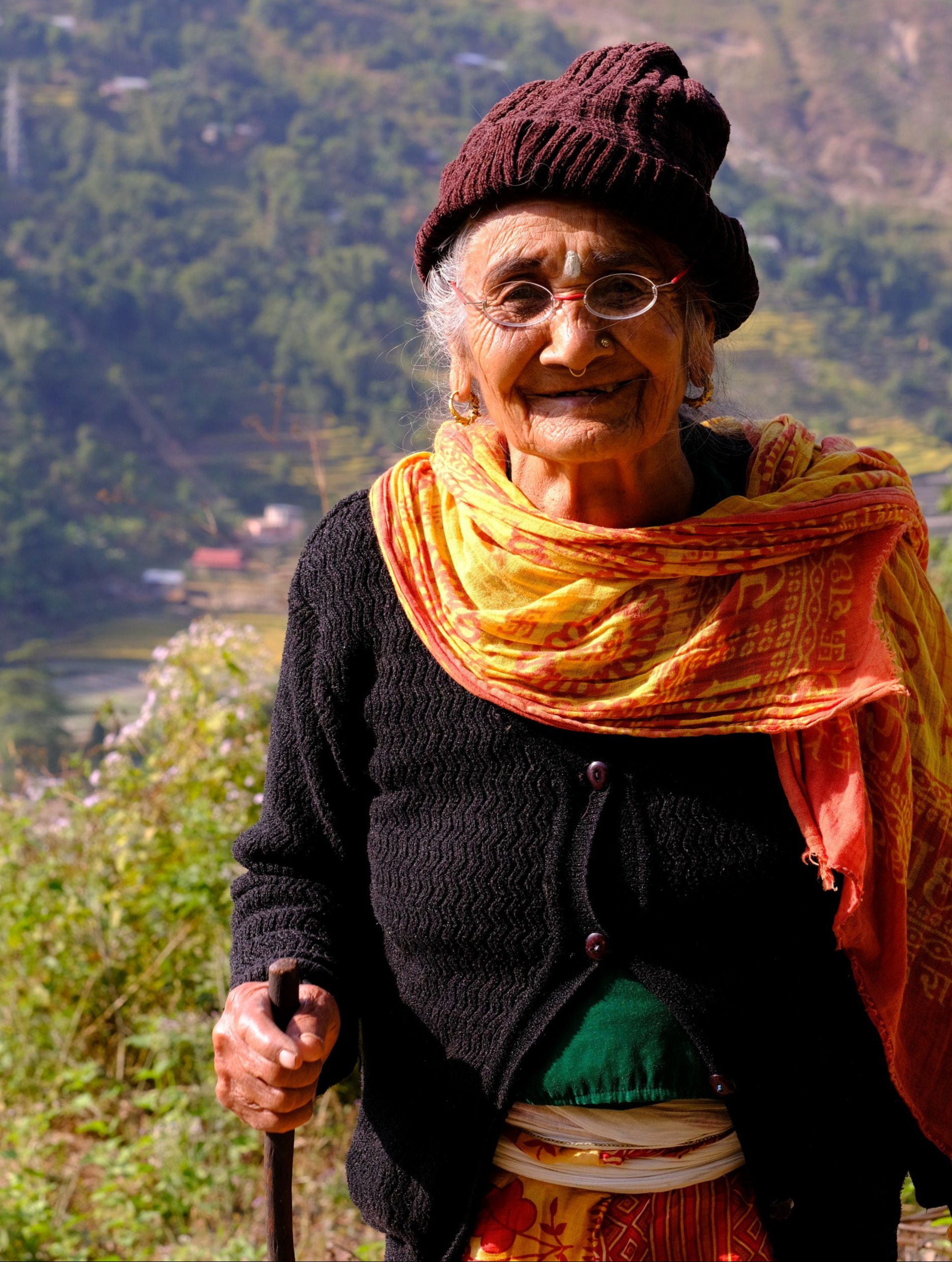In a quiet village in the hills of eastern Nepal, 28-year-old Sitaram Karki was listening to the radio when he heard an announcement about a temporary eye care camp being organized in a nearby town. Without hesitation, he made a decision that would significantly change his grandmother’s life.

His grandmother, 90-year-old Lalita Karki, had never had an eye examination in her life. Like many older adults in remote areas, she had been living with poor near vision for years, assuming it was simply part of aging. Reading, threading a needle, and even recognizing faces up close had become increasingly difficult.
Motivated by the chance to help, Sitaram sat his grandmother on the back of his motorcycle and drove her more than an hour across rough terrain to reach the mobile eye camp. The ride was not easy; unpaved roads, steep inclines, and dusty paths made the journey challenging, particularly for someone of Lalita’s age.

At the camp, she underwent her first-ever vision screening. The results were clear: she needed near-vision eyeglasses. The pair she received was simple but effective, tailored to her needs on the spot.
With a smile, Lalita proudly showed off her new eyeglasses to her grandson. She then turned to the camp staff and volunteers, equally proud to introduce the young man who had made this possible: the grandson who waited patiently through the entire process.
“Due to my age, I can no longer manage tasks that require mobility as easily, but I can still help in the kitchen and prepare religious threads for lighting lamps,” Lalita said.

As the sun began to set, the two climbed back onto the motorcycle. They reached their village just before nightfall, carrying with them not just a new pair of eyeglasses but a renewed sense of connection and a reminder of the difference even a single intervention can make in someone’s daily life.
“Lighting lamps is a task many grandmothers do. She is happy when she can support the family with these things - these are all near-vision activities, and with her reading glasses, she is able to do these kinds of things again,” Sitaram said.
This story is one of many coming out of GoodVision’s supported eye care initiatives that aim to bring essential services to underserved communities. For Lalita, it meant the simple joy of seeing clearly again. For Sitaram, it was a small act of love that will be remembered for a long time.
Presbyopia is a frequent eyesight issue tied to aging that starts after you hit 40. It makes focusing on things up close hard, which can turn activities like reading, threading needles, or spotting small details into a challenge. It’s not an illness; it happens as the lens in the eye becomes less flexible with age. The most cost-effective treatment for presbyopia is eyeglasses. Since presbyopia happens with age, you can't stop it from occurring. Regular eye checkups help to detect it and avoid its effects.
Thanks to mobile eye camps, people living in remote villages can also have access to essential eye care. In the so-called screening camps, a small team—usually consisting of optometrists, assistants, and an optical fitter—travels to the remote mountain regions of Nepal. There, they conduct eye examinations, distribute eyeglasses where needed, and identify patients suffering from cataracts. These patients are later treated either at a nearby eye hospital or at a specially organized surgical camp directly on-site.
This story was developed by GoodVision in collaboration with the WHO Vision and Eye Care Programme.
Photo credits: Antje Christ.
